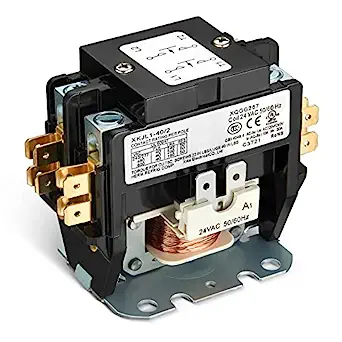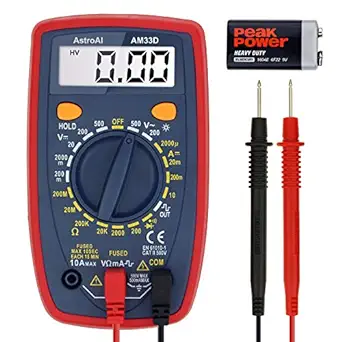Normal AC Contactor Operation

The contactor consists of a control coil, a metal plunger, and one or more sets of electrical contacts.
In order to determine whether a part is operating properly or not, you must understand how it is designed to work.
The control coil has a voltage rating on it. In most residential systems, the control voltage will be 24 vac but it can also be 120 vac or 240 vac. The rating will normally be written on the coil itself. This voltage is usually supplied to the coil by the thermostat.
When the control voltage is supplied to the air conditioner contactor, current flows through the coil and produces a magnetic field. The magnetic field attracts the plunger and pulls it into the center of the coil. This action cause the contacts to close.
Each set of contacts is composed of one fixed and one movable contact and is referred to as a pole. These contacts are made of steel and coated with silver for enhanced conduction of electricity. The movable contact is connected to the plunger and when the plunger is pulled into the center of the coil, the movable contact is brought into contact with the fixed contact. This completes the electrical circuit and provides power to the air conditioner components such as the compressor and the condenser fan.
When the home's thermostat senses that no further cooling is required, the control voltage to the contactor is shut off. When the current stops flowing through the coil, the magnetic field collapses and the plunger is released. The plunger springs back into its normal position and opens the contacts.
The air conditioner contactor can fail in one of two ways either electrically or mechanically.
Mechanical failure
The normal mechanical failure is that the contactor "sticks" closed. The normal signs of this are that the outside part of the system (condensing unit) will not shut off. With the thermostat off, the blower on the furnace or air handler is off but the condensing unit is still running. You will normally find ice covering the refrigerant lines and the evaporator coil. This failure normally occurs when the silver coating wears off of the contacts. An electric arc is created as the contacts close and without the silver coating, the contacts can be welded shut. If the contactor is sticking, it should be replaced.
The contactor can fail to mechanically close if something has gotten into the mechanism to physically prevent it from closing. This usually is caused by insects or mice.
Electrical Failure
The contactor can fail electrically in one of three ways and a simple multimeter is used to check for failure. The coil can become shorted, grounded, or open. The coil can become shorted when the insulation between the wires in the coil breaks down. This can be found by shutting off the power and taking a resistance reading between the terminals on the coil. The reading should be around 20 ohms, if it is significantly less, the contactor should be replaced. The coil can become grounded when the insulation on the outer wires of the coil breaks down and allows a path to another metal component. This can be found by taking a resistance reading from each coil terminal to the metal case of the air conditioner.

A low reading means the coil is grounded and the contactor should be replaced. (In both of these cases, the control circuit fuse on the furnace/air handler control board will probably be blown.)
If the coil is open, the contactor will not close when the control voltage is applied to the coil. This can normally be found by shutting off the power to the unit and the furnace/air handler and taking a resistance reading across the terminals of the coil. If the reading is significantly higher than 20 ohms, the coil is open and the contactor should be replaced.